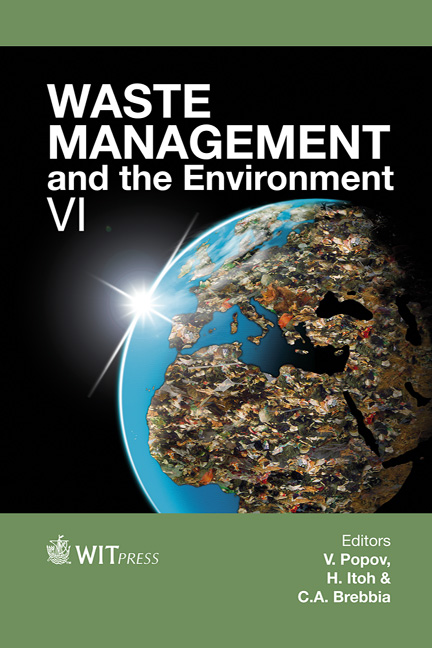Local Environmental Impact From MSW Aerobic Biological Treatment
Price
Free (open access)
Transaction
Volume
163
Pages
12
Page Range
13 - 24
Published
2012
Size
3,234 kb
Paper DOI
10.2495/WM120021
Copyright
WIT Press
Author(s)
E. C. Rada
Abstract
The present work indentifies some aspects of the environmental impact of two aerobic biological treatments (bio-drying and composting) applied to fractions of municipal solid waste (MSW) taking into account the odor release into the atmosphere and its concentration at ground level. Some scenarios are presented for the process air treatment and management: bio-filter and regenerative thermal oxidation treatment (RTO), at different heights of release. A Gaussian dispersion model, AERMOD, was used in order to assess the dispersion and odor emissions into the atmosphere. Data refer to a case-study region where both the biological plants could be constructed. A site of potential location for one of the two plants was studied from the odor impact point of view. The case of bio-filter at ground level resulted as the most critical, depending on the low dispersion of the pollutants. Technical solutions for the optimization of the impact are also proposed in this paper. Keywords: bio-drying, bio-filter, composting, MSW, odor, RTO. 1 Introduction In the sector of municipal solid waste (MSW) aerobic biological treatment, odor is not related to the presence of only one compound. Thus the management of the related problems is not easy. The interest in this problem has become more and more relevant in the recent years because of the construction of these plants near urbanized areas but also because of the greater attention paid to environmental protection and human health [1–6]. However the odor perception is a complex phenomenon with a strong subjective component.
Keywords
bio-drying, bio-filter, composting, MSW, odor, RTO.





